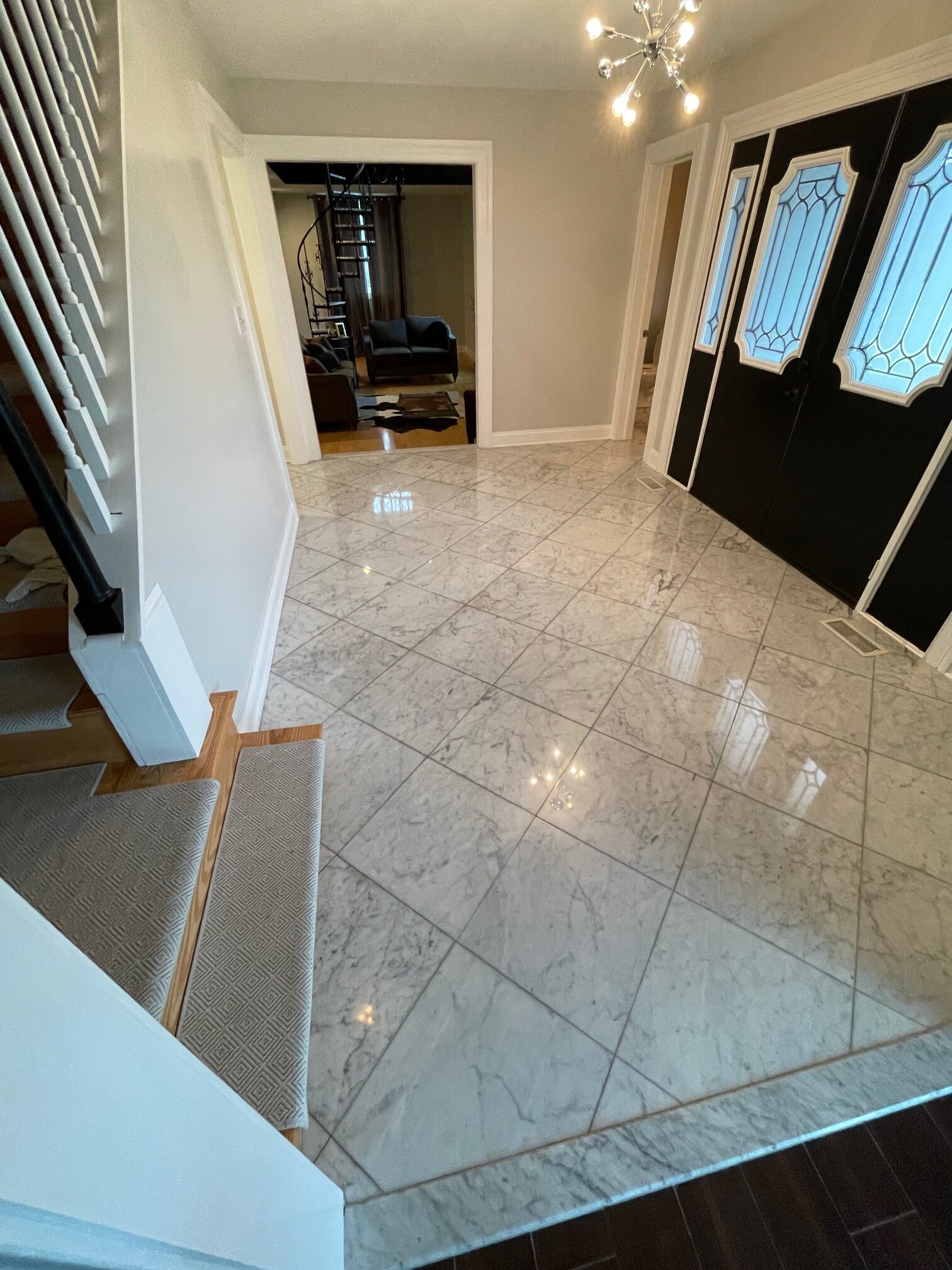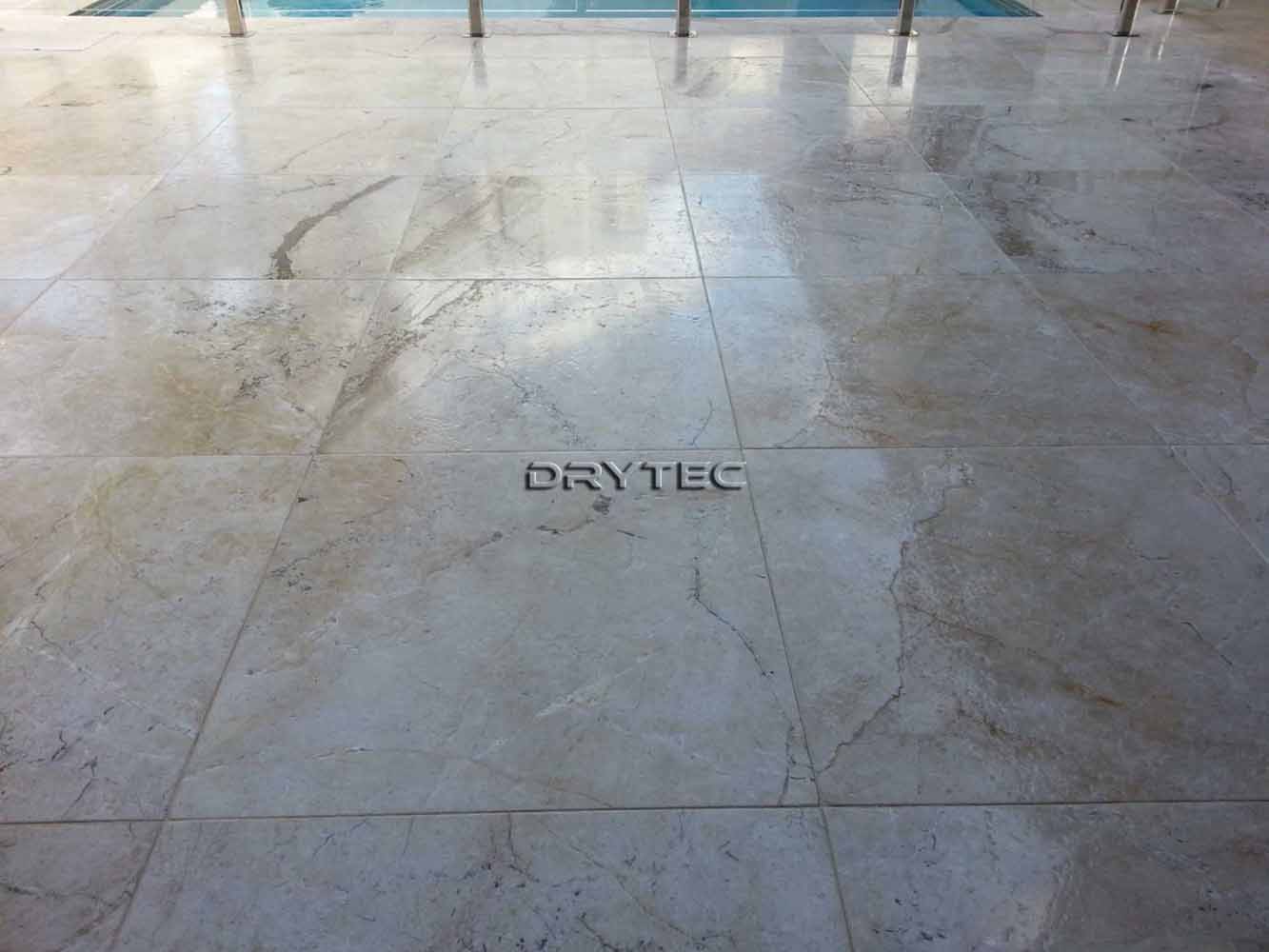Marble floor polishing revives the stone’s luxurious luster while removing scratches and etching. Professional polishing begins with coarse diamond abrasives that gradually smooth imperfections, progressing to finer grits for a mirror-like finish. The process removes a thin layer of stone, eliminating surface damage and revealing fresh marble underneath. Proper polishing enhances the stone’s natural veining and color variations, amplifying its visual impact. This restoration method works best on honed or unpolished marble that has become dull over time. The results transform worn floors into gleaming surfaces that reflect light beautifully.
Different marble types require specific polishing approaches. Carrara marble needs gentler treatment than harder varieties like Nero Marquina. Calacatta’s dramatic veining demands careful polishing to avoid uneven appearances. Honed marble requires additional steps to achieve gloss compared to previously polished surfaces. Professionals assess the stone’s condition, porosity, and existing finish before selecting appropriate abrasives. The polishing sequence must account for the marble’s sensitivity to heat buildup during the process. These tailored approaches ensure optimal results without damaging the delicate stone.
DIY polishing options exist for minor maintenance between professional services. Marble polishing powders containing oxalic acid can brighten small areas when applied with a damp cloth. Electric floor polishers with marble-specific pads help maintain larger surfaces. However, home methods rarely achieve the deep shine of professional equipment. Over-polishing can wear down the stone prematurely, especially on softer marble varieties. Homeowners should test any products in inconspicuous areas first and avoid acidic cleaners that could etch the surface. For significant restoration, professional polishing remains the most reliable solution.
Post-polishing protection preserves the marble’s renewed finish. Penetrating sealants fill the stone’s pores to resist stains and moisture absorption. These sealers need reapplication every 6-12 months in high-traffic areas. Felt pads under furniture legs prevent scratches on the polished surface. Regular dry mopping removes abrasive grit that could dull the finish. Immediate cleanup of spills—especially acidic substances like wine or citrus—prevents etching. These maintenance practices extend the polished appearance and protect the investment in marble flooring.
The benefits of professional marble polishing justify the cost for many homeowners. Beyond aesthetic improvement, polishing creates a smoother surface that’s easier to clean and maintain. The process can often eliminate shallow stains that penetrate the stone’s surface. Properly polished marble increases light reflection, brightening entire rooms. For historic homes or high-end properties, polishing preserves the floor’s value and authenticity. While requiring periodic repetition, marble polishing remains the most effective way to maintain the stone’s timeless elegance. The radiant results showcase marble’s natural beauty at its finest.
Stone Polishing & Honing Perth – Stone Restoration
Concrete Floor Coatings
TILESTRIP – Perth Floor Removal, Concrete Grinding & Polished Concrete
Related Posts:







